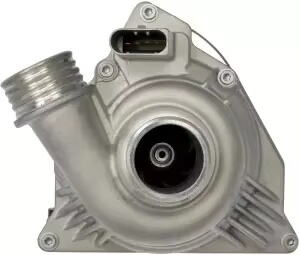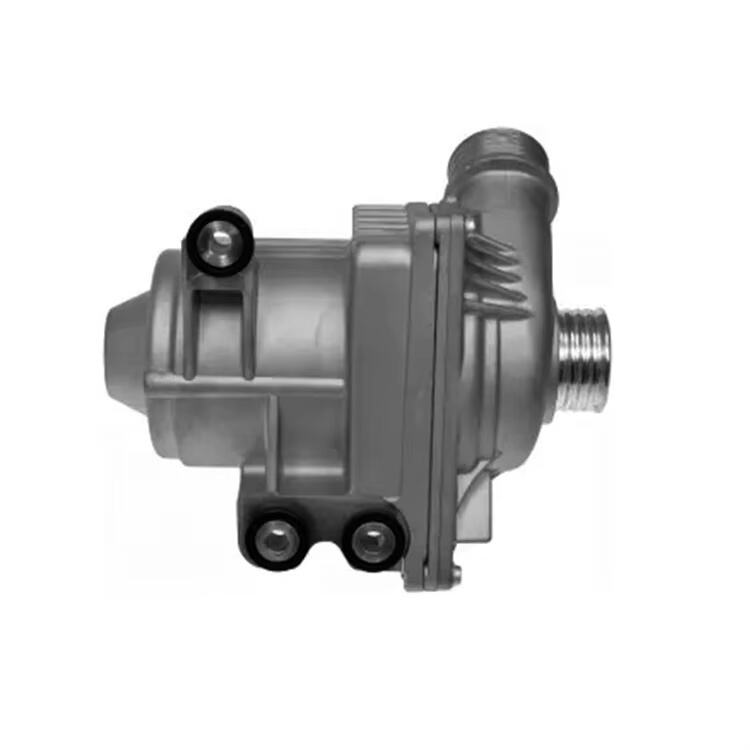Recognizing Early Signs of Engine Cooling Issues
Maintaining a reliable engine cooling system is essential for optimal vehicle performance. One of the most critical components in this system is the auto water pump. Responsible for circulating coolant throughout the engine, the auto water pump helps regulate temperature and prevents overheating. A failing pump can quickly lead to severe engine damage if left undiagnosed. Learning to identify the signs of a faulty auto water pump is key to timely repairs and long-term vehicle health.
Warning Signs of a Failing Auto Water Pump
Engine Overheating or Inconsistent Temperatures
One of the most noticeable symptoms of a failing auto water pump is engine overheating. When coolant flow is obstructed or weakened, heat is not efficiently dissipated from the engine block. You may observe temperature gauge spikes or warning lights on the dashboard. In some cases, the engine may operate at inconsistent temperatures, fluctuating without apparent cause. These signals often indicate that the auto water pump is not maintaining a stable coolant circulation.
Coolant Leaks Around the Pump Area
Leaks are a common indicator of auto water pump failure. Over time, the seals and gaskets that keep the coolant contained can degrade. When these components fail, coolant may seep out and form puddles beneath your vehicle, especially near the front of the engine. If you notice green, orange, or pink fluid on your driveway or garage floor, it's a strong sign that the auto water pump may need attention.
Mechanical Symptoms to Watch For
Grinding or Whining Noises From the Engine
Auto water pumps use bearings to allow the pulley to spin smoothly. If these bearings wear out, the pump may emit grinding, whining, or squealing noises during operation. These sounds usually come from the front of the engine and may worsen as the vehicle accelerates. Ignoring such symptoms can lead to complete bearing failure, causing the pump to seize or break apart internally.
Steam or Smoke Emanating From the Hood
A severely compromised auto water pump may allow the engine to reach dangerously high temperatures. In extreme cases, this can cause steam or even smoke to rise from the hood. If this occurs, the cooling system has likely failed entirely, and immediate action is required. Continuing to drive in this state can cause irreversible engine damage.
Impact on Overall Vehicle Performance
Reduced Cabin Heat During Cold Weather
A malfunctioning auto water pump can disrupt the flow of warm coolant to the heater core. This results in poor cabin heating performance, particularly noticeable during colder months. If your vehicle’s heater isn’t working effectively, it may be due to a circulation issue within the cooling system, likely originating from the auto water pump.
Check Engine Light and Diagnostic Codes
Modern vehicles often detect issues with auto water pumps through onboard diagnostics. If your check engine light turns on and diagnostics reveal codes related to the cooling system, the pump might be underperforming. Mechanics can use diagnostic tools to pinpoint whether the auto water pump is the root cause of the alert.

Visual and Manual Inspection Tips
Inspecting the Pump Housing and Pulley
Regular visual checks can help identify early signs of auto water pump failure. Look for corrosion, rust, or build-up around the pump housing. If the pulley is misaligned, wobbly, or difficult to rotate by hand, the internal bearings may be worn out. These signs often indicate an impending breakdown and justify a replacement.
Monitoring Coolant Levels and Color
Check your coolant reservoir frequently. A sudden drop in coolant levels without visible leaks may point to internal leakage within the auto water pump. Additionally, discolored or contaminated coolant could indicate that the pump’s impeller is deteriorating and mixing debris into the coolant flow.
Preventive Measures and Timely Replacement
Follow Manufacturer Maintenance Schedules
Most vehicle manufacturers recommend replacing auto water pumps at specific mileage intervals. Adhering to these guidelines helps prevent unexpected failures. If your vehicle is approaching the suggested service interval, it's wise to inspect or replace the pump proactively.
Pair With Timing Belt Replacements When Applicable
In many vehicles, the auto water pump is driven by the timing belt. It’s cost-effective and practical to replace both components simultaneously, as they have similar lifespans and are located in the same area. This practice minimizes labor costs and reduces the risk of a future breakdown.
The Importance of High-Quality Auto Water Pumps
Materials and Engineering
The reliability of an auto water pump largely depends on its build quality. Premium pumps are manufactured with corrosion-resistant materials like cast aluminum or reinforced plastic. These pumps maintain structural integrity even under extreme thermal stress and resist premature wear.
Compatibility and Warranty Support
Using an auto water pump that matches OEM specifications ensures optimal performance. Pumps from reputable suppliers often come with extended warranties and technical support, which is crucial for peace of mind and long-term vehicle care.
FAQ
What are the early symptoms of auto water pump failure?
Common symptoms include engine overheating, coolant leaks, unusual noises, and reduced cabin heat. Keeping an eye out for these signs can prevent further damage.
Can I drive with a bad auto water pump?
It’s not advisable. Driving with a failing pump can lead to severe overheating and permanent engine damage. Immediate inspection and repair are recommended.
How often should auto water pumps be replaced?
Most manufacturers recommend replacement between 60,000 to 100,000 miles. Always refer to your vehicle’s service manual for specific intervals.
Is it necessary to change the timing belt when replacing the auto water pump?
If your vehicle’s water pump is driven by the timing belt, it's often recommended to replace both at the same time to save on labor and avoid future issues.
Why is my coolant level dropping if there’s no visible leak?
A drop in coolant levels without visible leakage may suggest internal water pump failure. It's best to inspect the pump for hidden issues or internal leaks.

